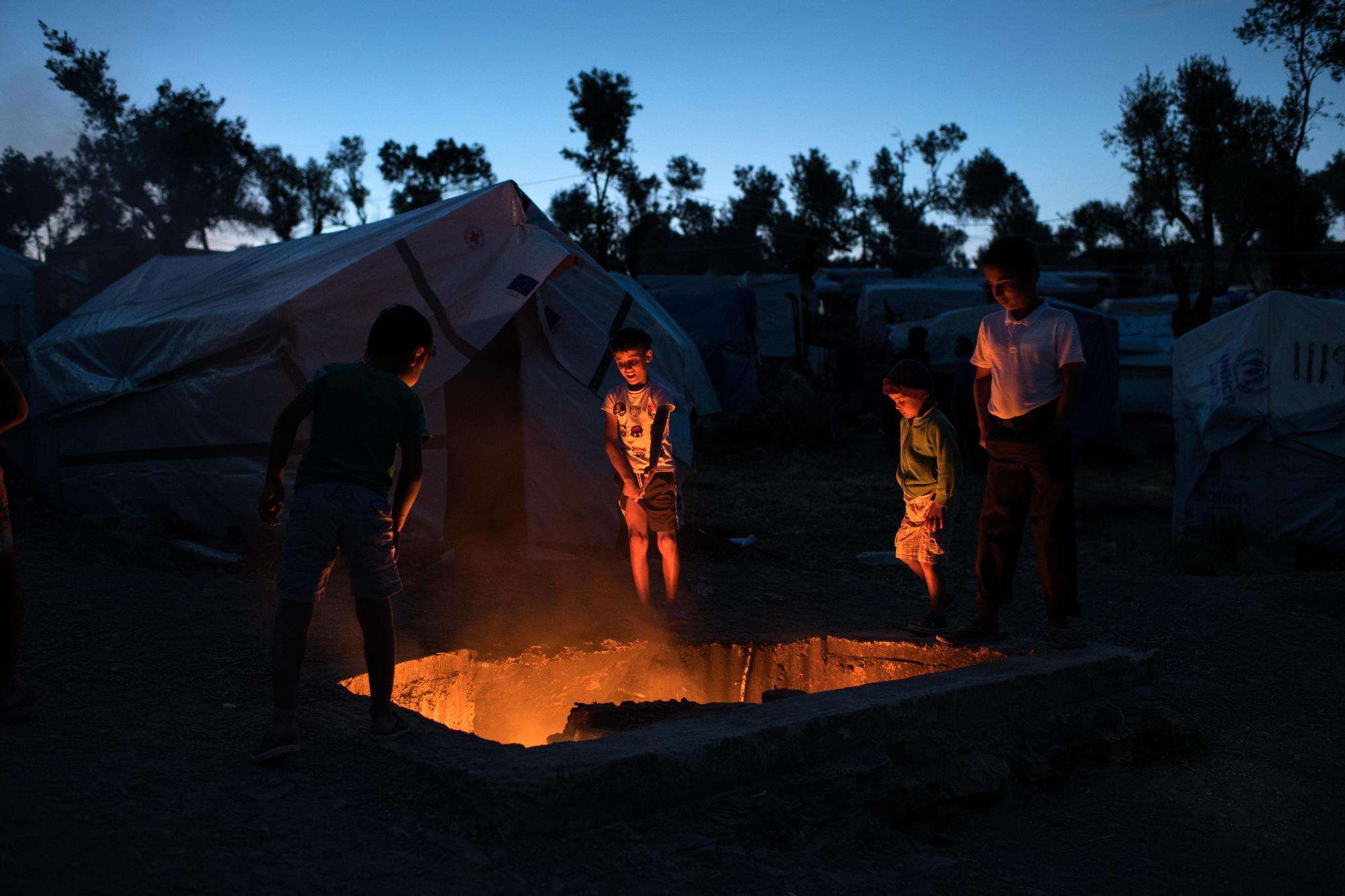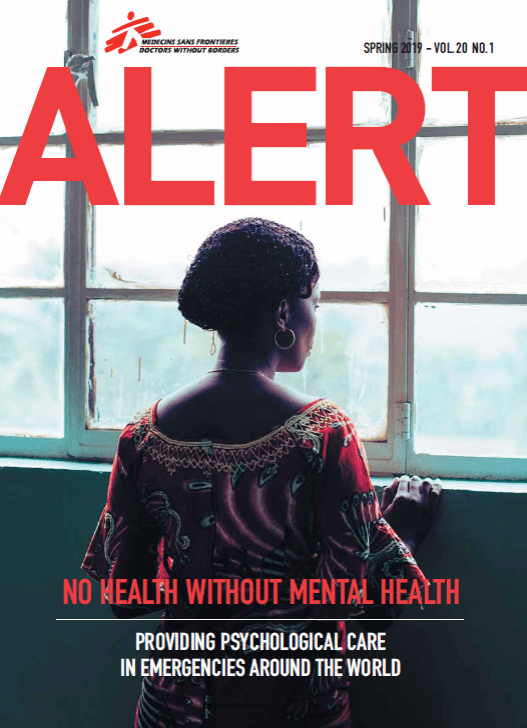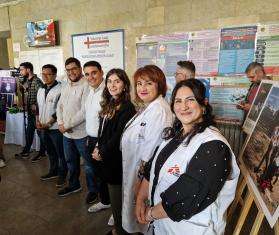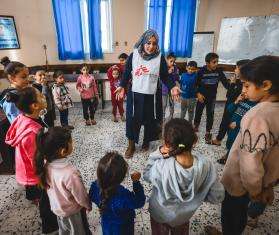Moria camp was built on the Greek island of Lesbos to house the influx of asylum seekers making the dangerous journey across the Aegean Sea on flimsy rubber boats to seek safety in Europe. Today, inhumane living conditions, frequent violence, and prolonged uncertainty about the future have created a mental health emergency for the refugees stranded in this island prison—with children among those most at risk.
In September, Doctors Without Borders/Médecins Sans Frontières (MSF) called for the urgent evacuation of children and other vulnerable people from the camp. At the time there were around 9,000 people living in Moria, triple its capacity. Greek authorities began moving people to other facilities this winter, but the population still hovers around 5,000.
MSF provides mental health care and other medical services to camp residents, who have fled from countries including Syria, Afghanistan, Iraq, and Democratic Republic of Congo. Many of the children have already experienced trauma and extreme violence in countries at war and are now subjected to ongoing stress and further violence, including sexual violence, in a place where they expected to find safe refuge.
Each week, MSF teams working in the camp see multiple cases of minors who have harmed themselves or attempted suicide. Other child patients suffer from panic attacks, anxiety, mutism, aggressive outbursts, and constant nightmares.
Myriam Abdel Basit, an MSF cultural mediator, spent seven months working in an MSF clinic that provides mental health care for children and teenagers living in Moria. Here, she explains some of the techniques and activities her team used through group sessions to help the children to understand and express their feelings, and to learn how to ask a loved one for support.
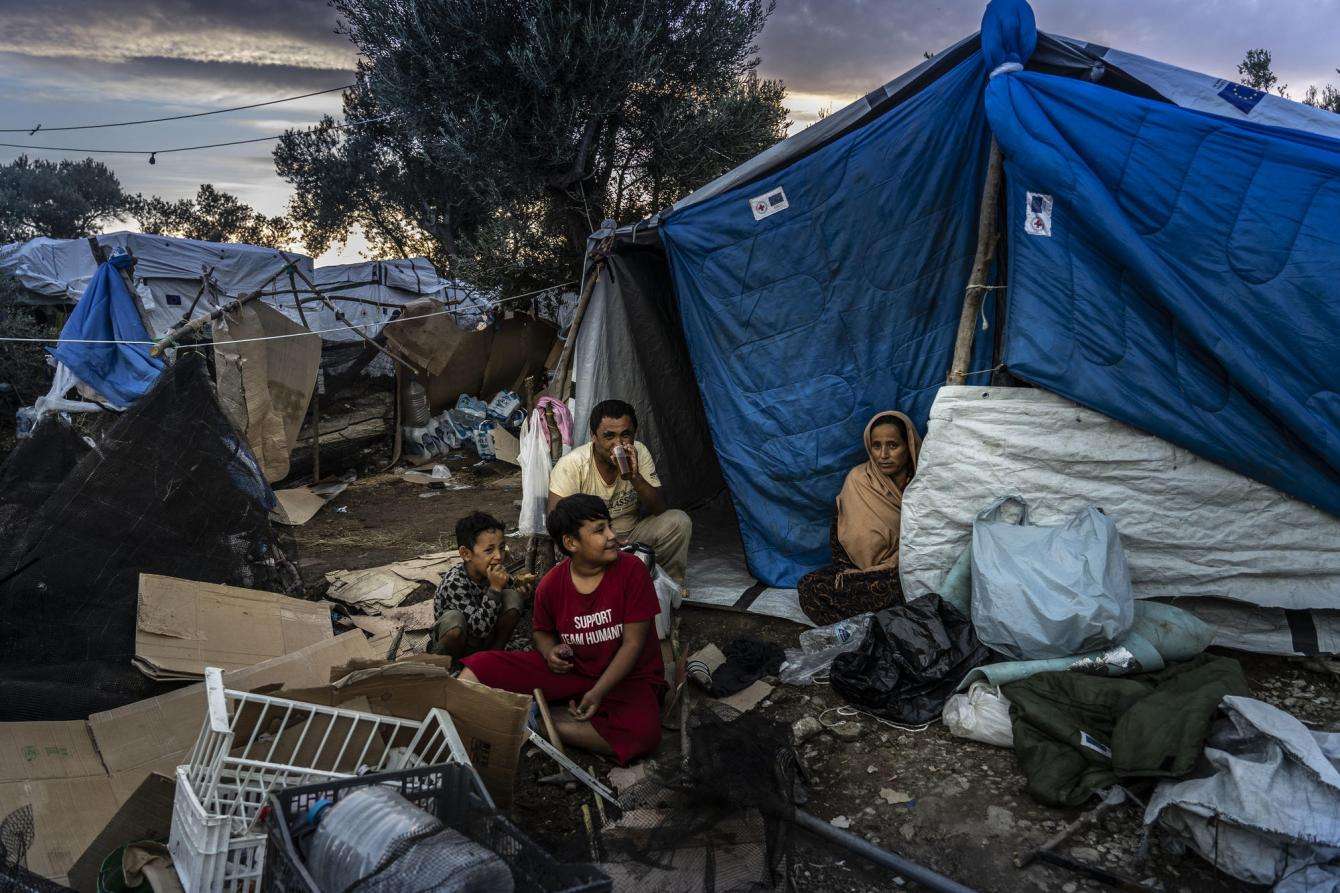
Back in the summer of 2018, Moria was housing more than 8,000 people in a space designed to fit no more than 3,000. After fleeing violence, war, persecution, or poverty, people crossed the seas only to be stranded here, in overcrowded, unsafe, and unhygienic conditions, waiting to go to the mainland.
As an Arabic-speaking cultural mediator, my role was to help facilitate communication between the children and our health staff and speak to children about what they’d been through. Part of my job was to work with a psychologist to do psychotherapeutic sessions with children between the ages of 8 and 17 who showed symptoms of trauma. We did some activities that helped them to recognize the emotions they were feeling, and others that helped with nightmares, bedwetting, and other signs of trauma and anxiety.
A really interesting part of the therapy process used storytelling to help children deal with their trauma. We split patients into groups that worked together to create a book about one or two fictional characters that had gone on a similar journey to them.
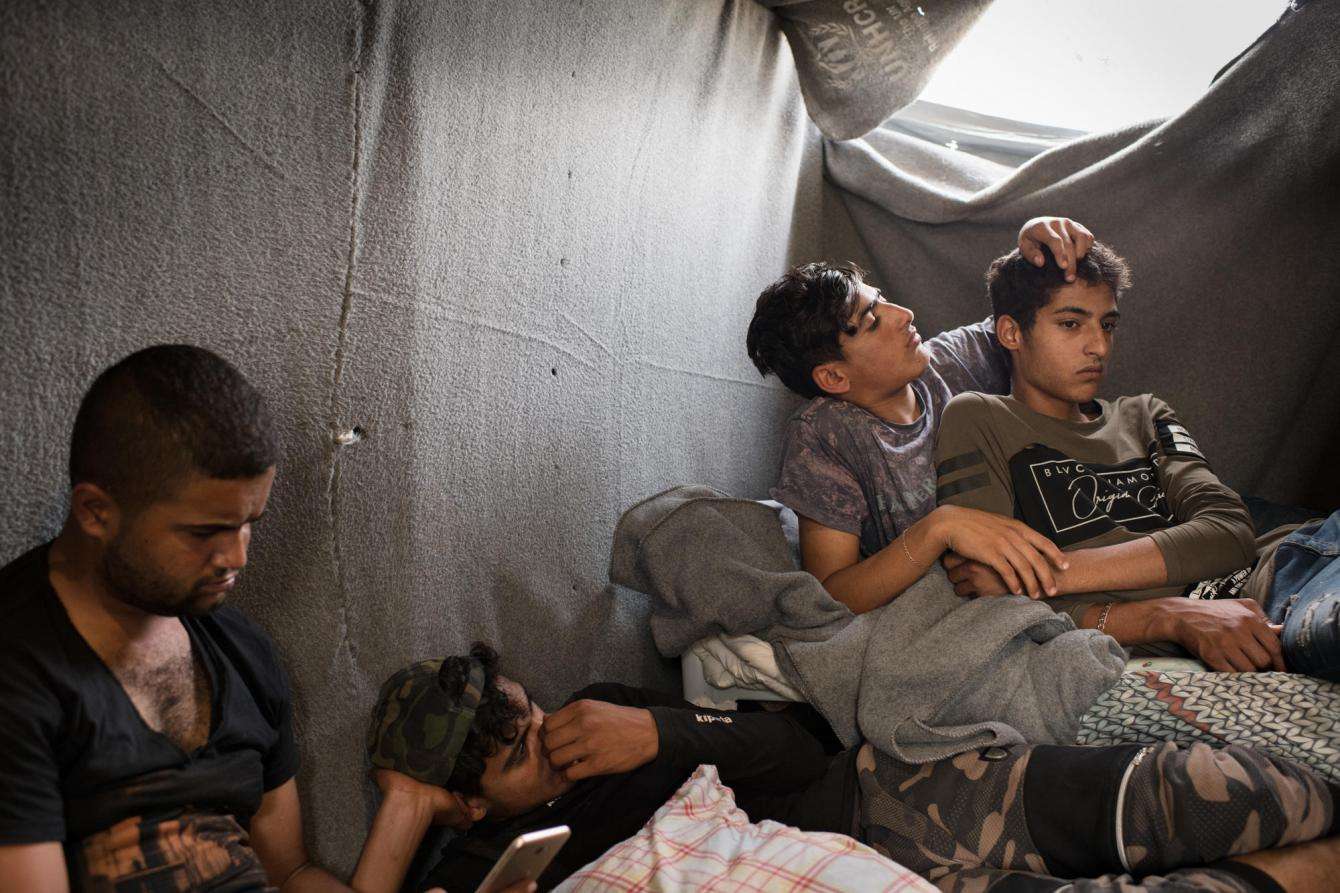
One 17-year-old told us that he felt a huge amount of sadness, but as the oldest of his siblings, he felt he had to keep smiling and hide these feelings in front of his parents and the rest of his family. He said he was grateful to have a safe space to talk where he didn’t have to fear upsetting anyone. By the end of the therapeutic process we saw visible changes in his mood and demeanor. He was really into rap music, and at the book ceremony he performed a rap about some of the racial tensions and religious discrimination that existed in the camp. When we first met him, he was quiet, quite introverted, and sad, so it was remarkable to see how far he’d come.
It was often tough hearing all the stories of the war and journeys to Europe, especially from children. We had about five children, two groups of siblings, who had lost their fathers in the most terrible ways. They were all experiencing a lot of grief and would talk about their loss a lot. I was advised by the psychologist to always be careful in ensuring that one child’s story doesn’t trigger trauma for the others.
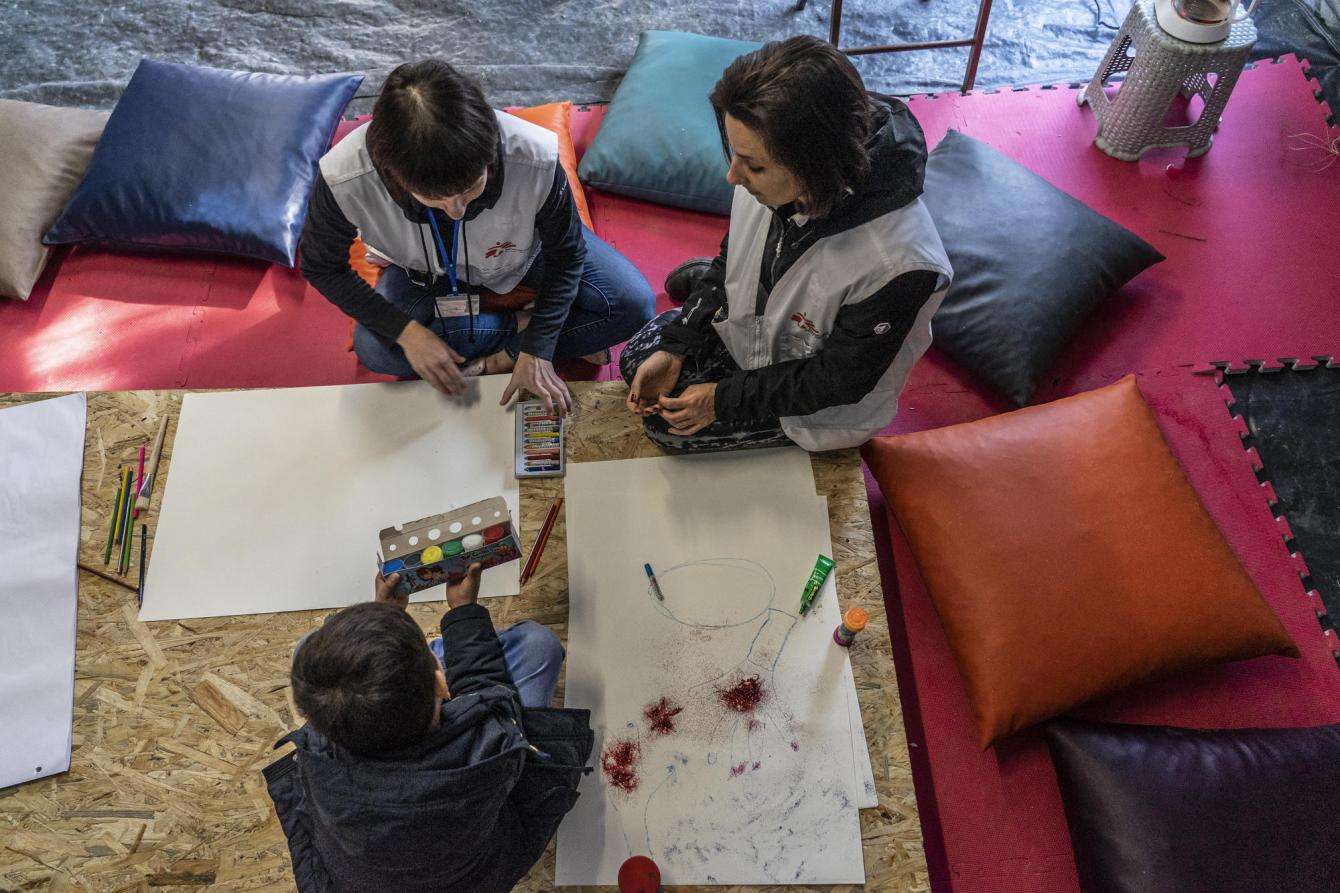
During one session we were talking about happiness and one nine-year-old child who had lost her father said, “I don’t think I’m ever going to feel happiness again.” It was heartbreaking to hear this coming from someone so young and who had their entire life ahead of them. Thankfully, after a few more sessions, most of the children appeared happier. They still talk about family members they’ve lost, but they focus on happy memories.
We spoke at length with the children about their dreams, their aspirations, and what they’re going to do after this experience is over. Many of the children already had hope for their futures, so that just needed to be supported. One teenager shared with us, “Yes, I have lost six years, but I’m going to make it up. We all have a future ahead of us. We have dreams that we will pursue.”
The parents gave the most incredible feedback. They told us that their children were so much happier after our sessions. I also think the parents found listening to the [stories] therapeutic for themselves as well, particularly the last chapter about life after Moria. Many of the parents had lost hope but rediscovered it through their children. One mother told us that we had given her a hope that there is life after the camp.
It was wonderful to see the children come alive and help each other with their stories. It was beautiful to see because it didn’t matter where they were from—in the end they told each other’s stories as if they were one.
